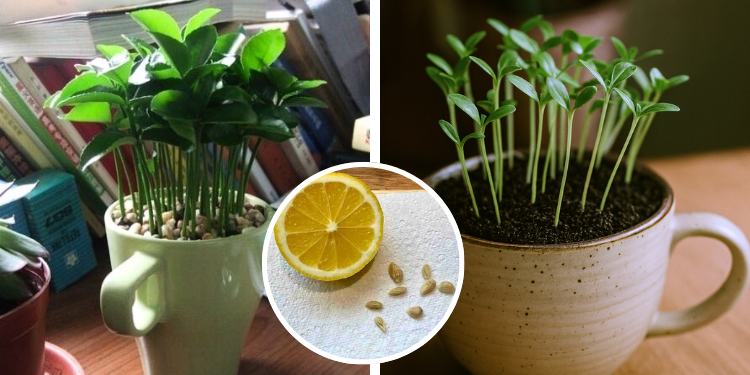Caring for Your Lemon Plant
Your tiny lemon plant needs consistent care to thrive.
Light
Lemon seedlings love sun. Place them in a south-facing window or under a grow light for at least 8 hours a day.
Watering
Keep soil evenly moist. Lemon plants dislike extremes – don’t let soil dry out completely, but don’t leave it soggy either. A good rhythm is to water when the top inch of soil feels dry.
Soil
Use rich, well-draining soil with organic matter. Avoid heavy garden soil that compacts inside cups.
Fertilizing
After 6–8 weeks, feed your seedling with a diluted liquid fertilizer. Citrus plants enjoy nutrients such as nitrogen, phosphorus, and potassium.
Transplanting
Once your seedling grows 4–6 inches tall, move it into a larger pot (6–8 inches wide). Eventually, you can grow it into a small potted lemon tree indoors.
The Benefits of Growing a Lemon Plant Indoors
Purifies Indoor Air
Citrus leaves release compounds that freshen air, reduce odors, and provide a natural clean scent.
Improves Mood and Focus
The fresh citrus aroma stimulates serotonin production and reduces stress hormones. This is why lemon essential oil is often used in aromatherapy. Having the living source nearby is even more powerful.
Teaches Patience and Mindfulness
Gardening on a small scale encourages daily attention and patience. Watching seeds sprout into plants brings joy and connection to nature.
Adds Beauty and Energy to Your Space
A green lemon plant on your desk, kitchen counter, or windowsill adds color, vibrancy, and a sense of life to your home.
Common Problems and How to Solve Them
Even though lemon seedlings are hardy, you might encounter a few issues:
- Mold on Soil: Usually caused by overwatering or poor drainage. Let soil dry slightly and ensure good airflow.
- Leggy Growth: Not enough light. Move closer to a sunny window or add grow lights.
- Yellow Leaves: Often a sign of nutrient deficiency. Begin light fertilization.
- Slow Germination: Some seeds take longer. Always plant several to increase success.
Tips for Long-Term Success
- Rotate the cup every few days so the seedling grows evenly toward light.
- Mist leaves occasionally to mimic natural humidity.
- Don’t be afraid to thin seedlings if too many sprout in one cup. Stronger plants will thrive.
- Keep your lemon plant indoors in cooler climates. In warm regions, it can eventually move outdoors in a larger pot.
Beyond the Cup: Growing a Lemon Tree Indoors
Once you’ve mastered growing a lemon in a cup, you can expand. With proper care, your seedling can grow into a small lemon tree in a container.
While it may take years to produce fruit, the plant’s glossy leaves and citrus scent are reward enough.
For faster fruit, many gardeners graft lemon seedlings onto established rootstock. Even without fruit, an indoor lemon tree is one of the most rewarding houseplants you can grow.

Planting a lemon in a cup is more than just a fun project – it’s a natural way to purify your air, improve your mood, and bring a touch of the tropics into your home.
With just a lemon, a cup, and some soil, you can start a small ritual of daily care that rewards you with beauty, fragrance, and health benefits.




